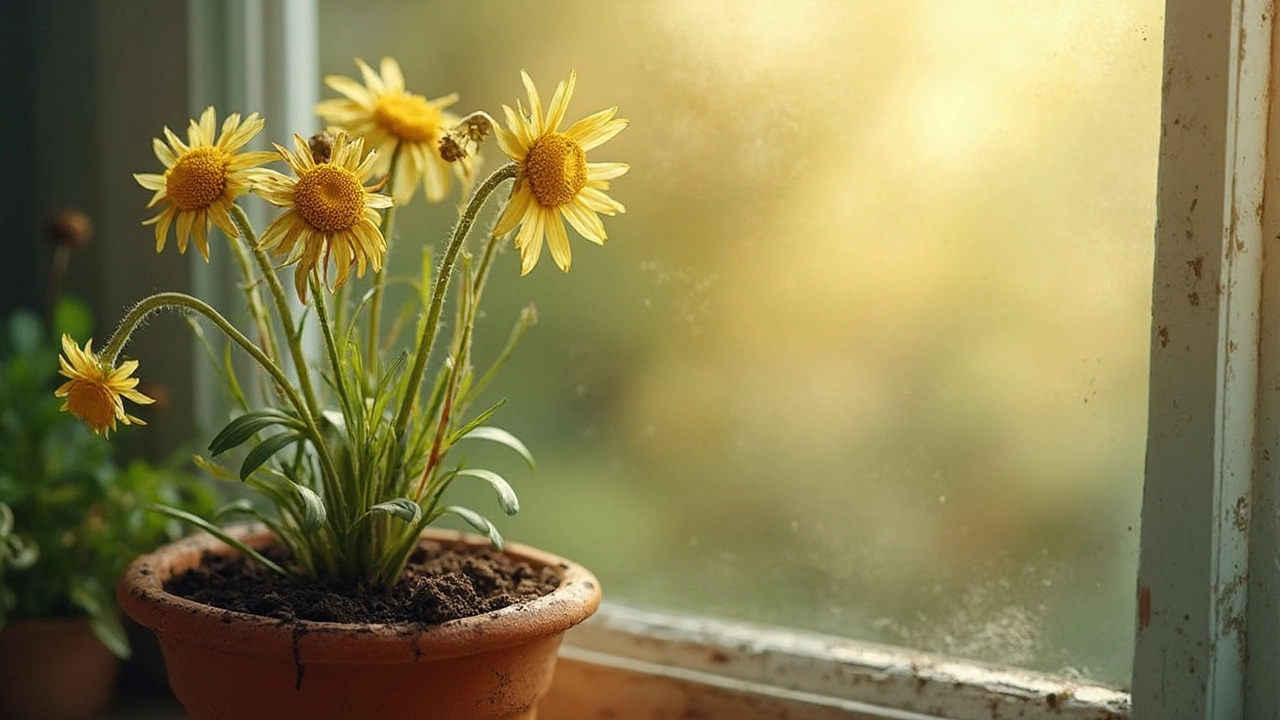Overwatering is a frequent issue for daisy enthusiasts, leading to droopy and sick-looking flowers. Recognizing signs like yellowing leaves and root rot is crucial to saving your beloved plants. This article delves into the distinct symptoms of overwatering, practical tips for correcting the problem, and ways to ensure thriving indoor daisies all year round.
Daisy Symptoms: Common Signs of Trouble and How to Fix Them
When your daisies start looking off—wilting, yellowing, or losing petals—it’s not just bad luck. It’s a signal. daisy symptoms, visible signs of stress or disease in daisy plants that point to underlying issues like watering problems, pests, or soil conditions. Also known as flower distress signals, these clues help you act before the whole plant gives up. Most gardeners ignore early daisy symptoms until it’s too late. But spotting them early means saving your plants, not replacing them.
Daisies are tough, but they’re not magic. They react fast to what’s happening around them. If the leaves turn brown at the edges, it’s often too much sun or not enough water. If the stems look soft and mushy, that’s root rot from wet soil—common in pots with no drainage. Yellow leaves? Could be a nutrient gap, usually nitrogen or iron. And if you see white fuzzy patches or tiny bugs on the undersides of leaves, you’ve got fungus or aphids. These aren’t random issues. They’re direct results of environment, care, or neglect. daisy care, the daily and seasonal practices that keep daisy plants healthy, including watering, soil prep, and pest monitoring. It’s not about fancy products. It’s about paying attention.
What you’ll find below are real fixes from real gardeners who’ve been there. No fluff. No theory. Just what works in Indian gardens—where heat, monsoon humidity, and poor soil can turn a healthy daisy into a mess in days. You’ll see how to tell the difference between a plant that just needs water and one that’s dying from fungus. You’ll learn why over-fertilizing kills more daisies than under-fertilizing. And you’ll find out which mistakes people make again and again, like planting daisies too close together or using the wrong kind of mulch. These aren’t guesses. They’re patterns pulled from dozens of cases where gardeners saved their flowers by acting on the right symptoms.
Some of the posts here talk about how to fix soil that’s too dense, how to stop pests without chemicals, and how to keep flowers blooming even when the weather turns. They don’t just describe problems—they show you exactly what to do next. Whether you’re growing daisies in a balcony pot or a backyard bed, the signs are the same. The solutions? They’re simpler than you think. You don’t need a degree in botany. You just need to know what to look for—and what to do when you see it.
